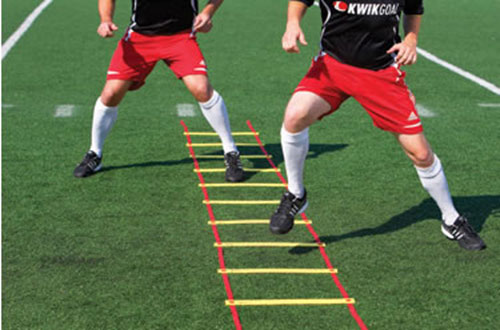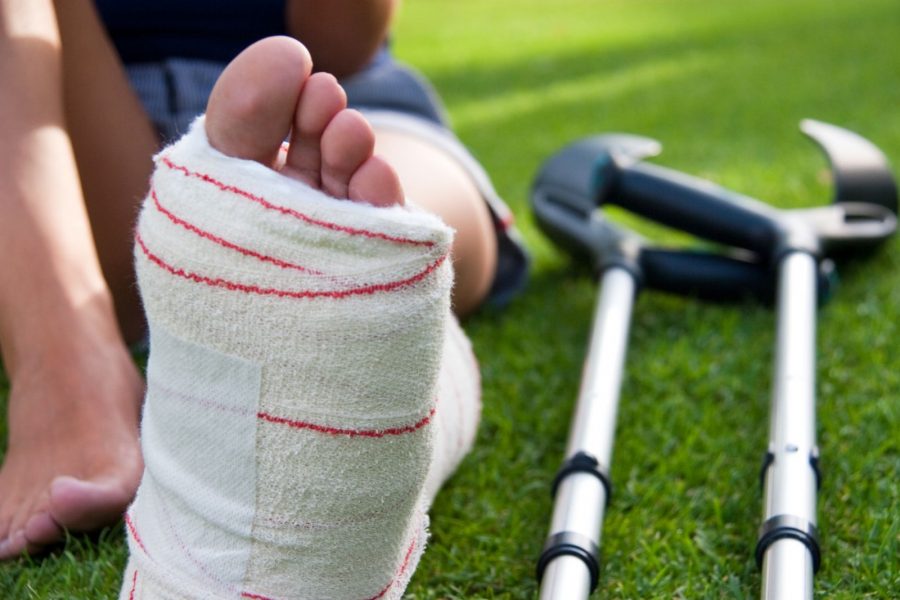In Part I of this article, various types of ankle sprains that soccer athletes experience are described as well as tips for prevention. These injuries
In Part I of this article, various types of ankle sprains that soccer athletes experience are described as well as tips for prevention. These injuries are extremely common and must be dealt with appropriately in order to return to playing soccer as quickly as possible.
The highest risk factor for experiencing an ankle sprain is having a history of a previous ankle sprain. Because the rate of re-injury after spraining an ankle is incredibly high, it is important to ensure proper healing through rehabilitation after an injury occurs. A physical therapist can be helpful in strategically and appropriately progressing you through the stages of healing.
When a ligament is stretched beyond its capacity, it enters a state of acute inflammation. Follow the acronym “PRICEMEM”: Protect, Rest, Ice, Compress, Elevate, Manual Therapy, Early Motion, Medication. Click here to read more about “PRICEMEM” and how to manage an acute injury.
In the case of an ankle sprain, ice for approximately 20 minutes, several times per day, for the first 2-3 days or until there is no longer pain at rest. Then, continue with an ice regiment as needed to manage swelling and pain, likely 1-2 times per day. You must protect the tissue from further injury, which might involve temporary use of crutches, a boot, or a brace, if walking is painful.
It is recommended to seek medical consult to rule out a fracture, particularly if weight-bearing continues to be painful. Incorporate early motion by making circles or writing the alphabet in the air using your ankle (this should be kept pain-free, so modify as needed). Manual therapy by a skilled physical therapist can be very effective in decreasing swelling and restoring proper mobility of the many joints and soft tissues throughout the foot.

Once inflammation has subsided and mobility is normalizing, emphasis should be on strengthening and proprioceptive retraining. Strengthening muscles across the ankle, particularly the peroneal and tibialis posterior muscles, will help to protect the ligaments from overuse or trauma. Try using a Theraband (resistance band) for inversion and eversion exercises. Gradually resume hip, and core strengthening (as described in Part I) with proper mechanics to protect the ankle from abnormal forces and overuse.
Another critical component of rehabilitation is proprioceptive retraining. Sensory receptors throughout the body send messages to the brain and spinal cord about joint position and motion (especially important if your ankle is beginning to “roll”). The body responds to the messages by coordinating a response to restore an intended position or movement. If proprioception is impaired, which often results from spraining an ankle, then your body may not correct itself as quickly, allowing the ankle to roll too far and become re-injured.
As an exercise, try balancing on one foot while standing on an unstable surface (pillow, dynadisc, BOSU). You can make this more challenging by tossing a ball with your hands or volleying a soccer ball with the other foot at the same time. A good orthopedic physical therapist will advance these exercises as appropriate and provide cues for proper technique, such as neutral foot position, hip control, and core stability.
Slowly progress back to agility training and ball control exercises, as tolerated. Before returning to full soccer training, the athlete should demonstrate full, pain-free ankle range of motion, nearly full strength compared to the uninjured side, and ability to hop on one foot, run, and cut zigzags without limitations or pain. Bracing or taping may be necessary to stabilize the ankle and decrease the risk of re-injury.
